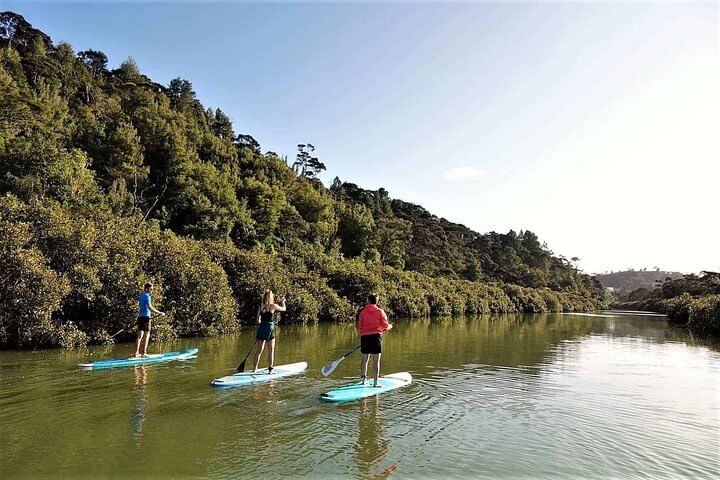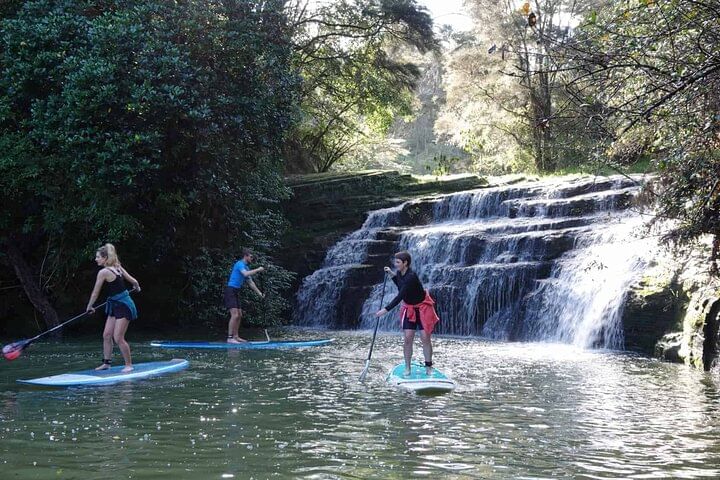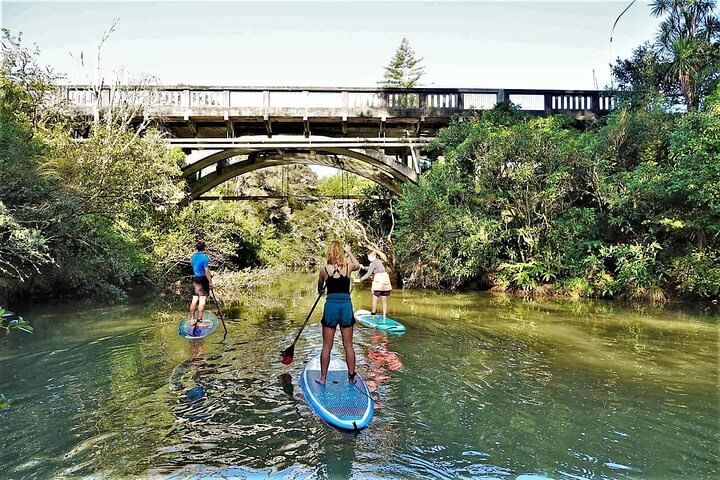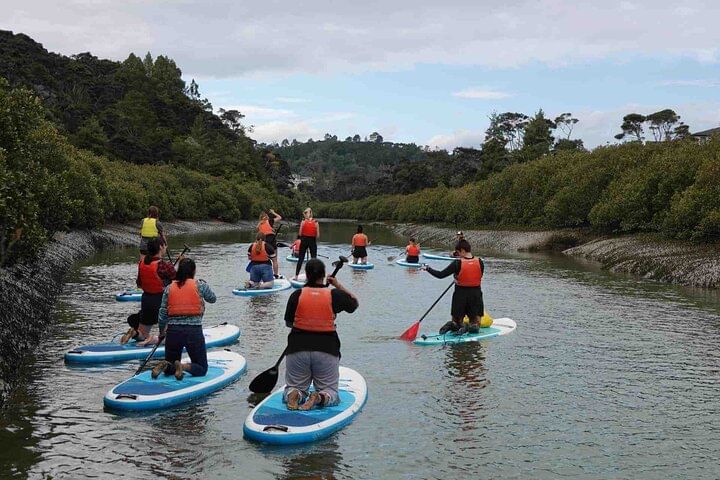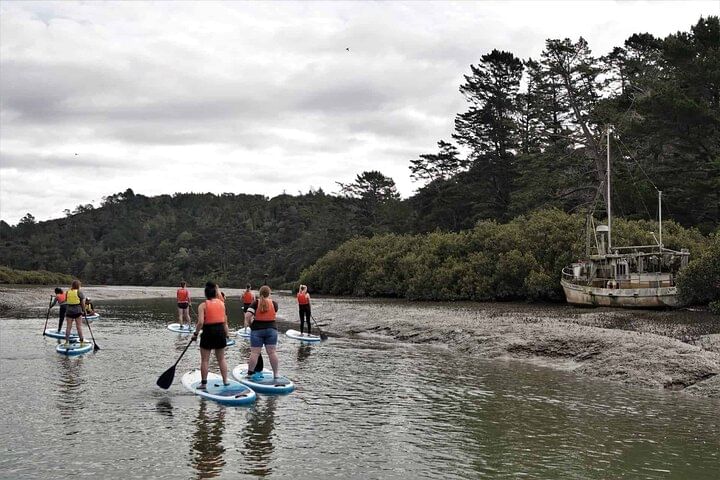2-Hour Stand-Up Paddle Boarding Tour to Lucas Creek Waterfall
2 hours
Easy
North Shore Albany Beginner Paddle Board Tour
Located on Auckland's North Shore, Albany provides access to beautiful beaches, harbors, and estuaries. Our experienced guides lead the tours, offering instruction and insights.
During your Albany SUP adventure, navigate the Albany Basin's serene waters, taking in its unique features and natural beauty. The basin includes sheltered bays, islands, and hidden coves, creating a diverse paddling experience. Keep an eye out for marine life, including seabirds, fish, and possibly dolphins or seals.
A highlight of our Albany SUP tours is paddling along the coastline, discovering hidden gems like secluded beaches and rocky outcrops in the local Albany area. Enjoy breathtaking views of lush hills, rugged cliffs, and the Hauraki Gulf.
These tours last a few hours, allowing you to immerse yourself in nature.
What's included?
- Food & drinks
Exclusions
Please note
Hazards and Risks
Adventurous activities involve inherent hazards and potential risks, often coupled with the severity of hazards and the likelihood of risks.
Hazard: ‘anything’ that can cause harm. Hazards might be rocks, trees, water (drowning, floods), wildlife, humans, heights (falls, falling objects), machines, tools, weather (hypothermia).
Risk: the potential of something happening. Risks could be death, serious injury and/or emotional harm.
Adventurous activities offered by SNM could be dangerous if they’re not approached with care and responsibility. Participation in such activities is voluntary and not compulsory.
Hazards and risks are managed using a hierarchy of controls to choose the most effective control measures starting with elimination, then minimisation, substitution and isolation. Further measures take on administration controls and personal protective equipment if risks and hazards remain.
What to bring
Clothing
- Togs,
- Towel,
- Warm clothing,
Equipment
- Personal medication
- Water bottle,
- Shoes/booties (no sandals/crocs).

